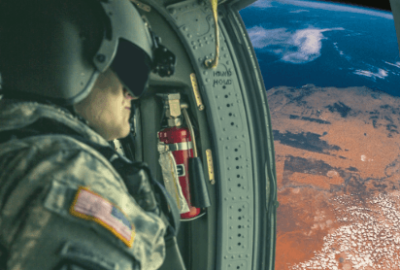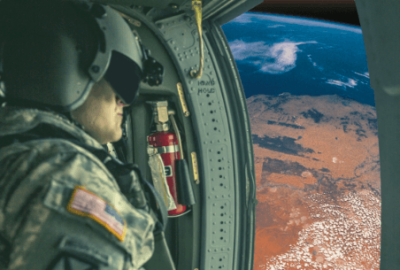
Space Force wants to make sure HR is solidified before transferring troops over
The Space Force is making sure its human capital ducks are in a row as it sets up.
Best listening experience is on Chrome, Firefox or Safari. Subscribe to Federal Drive’s daily audio interviews on Apple Podcasts or PodcastOne.
The military’s newest branch is beginning to take form now that the Air Force secretary delivered plans for the organizational set up of the Space Force to Congress this week. 16,000 military and civilian employees will be assigned to the service, and 6,000 of those who are in uniform will be transferred to the Space Force, leaving their old branch behind.
Eventually, Lt. Gen. David Thompson, Space Force vice commander, estimates there will be about 16,000 uniformed Space Force members, but it will take some time to get to that point.
The service will bring in members from every military branch by 2022, terminating their employment with the Army, Navy, Air Force or Marines and reenlisting them under the Space Force.
Before that happens, the organizational thinkers behind the new service want to make sure all of their ducks are in a row to avoid any SNAFUs surrounding payroll and benefits.
“We need to go through a process with Congress to provide authorization for specific names and specific individuals to transfer into the service,” Thompson told reporters Wednesday at the Pentagon. “The second thing is personnel benefits, pay systems, a whole host of other things are connected very closely to the process of appointing members to the service. We want to make absolutely sure of that when these individuals transfer in because the last thing we want is to go through this process, generate excitement and people are happy, but then they don’t get paid.
Thompson said the process will take “a series of months, not a very long time.”
For now, Gen. Jay Raymond, chief of space operations, remains the lone member of the Space Force.
The personnel that will transfer from the different services will be people who work in global space operations; working in jobs pertaining to missile detection and warning; intelligence; and positioning, navigation and timing.
The Space Force will be structured into three directorates — human capital and logistics; operations, cyber and intelligence; and plans, programs, requirements and analysis.
Patricia Mulcahy, former Defense Department director of officer and enlisted personnel, is now heading the human capital directorate.
“We have a basic understanding of the roles and responsibilities we want each of those directorates to do,” Maj. Gen. Clint Crosier, director of the Space Force Planning Office said. “As they get in place the idea is they will sit down with their counterparts on the Air staff and their counterparts in the secretariat and really hammer out those details on where we will leverage support from the Air Force.”
The Space Force is mandated to be a mission-focused service, and to stay lean and agile. Crosier said that being within the Department of the Air Force the Space Force can lean on the Air Force for basic functions and put its efforts solely on mission-focused work.
“Let’s not be duplicative, let’s not replicate, let’s be unique and different only where the space domain requires it or its central to the independence of a new service. We will heavily leverage the Air staff,” Crosier said. “Gen. Raymond wants us to be novel in our approach. As we think about a 21st century human capital construct, a 21st century headquarters, if we think about being smaller, flatter and more agile than other services that may not mean you adopt the standard Napoleonic headquarters structure.”
The Space Force also wants to have a completely new approach to human capital.
“We want a 21st century approach to talent management,” Thompson said. “Most of the services have what I call a rigid structured, 20th century model for personnel management. Treating those folks as capital and looking at how we can best utilize them and best employ, inspire and train them is what we are looking at. Another thing is we are very rigorously looking at automation, where in the past we’ve used people.”
Finally, one human capital aspect everyone is curious about is what Space Force troops will be called. Thompson said the service is talking to the language department at the Air Force Academy and other language centers.
“There are a couple of really strong options on what we might be called, but what we want to do is make sure we’ve thought as broadly as we can,” Thompson said. “I think we are pretty close.”
He did say they won’t be called space cadets or space men.
Copyright © 2025 Federal News Network. All rights reserved. This website is not intended for users located within the European Economic Area.
Scott Maucione is a defense reporter for Federal News Network and reports on human capital, workforce and the Defense Department at-large.
Follow @smaucioneWFED
Related Stories





